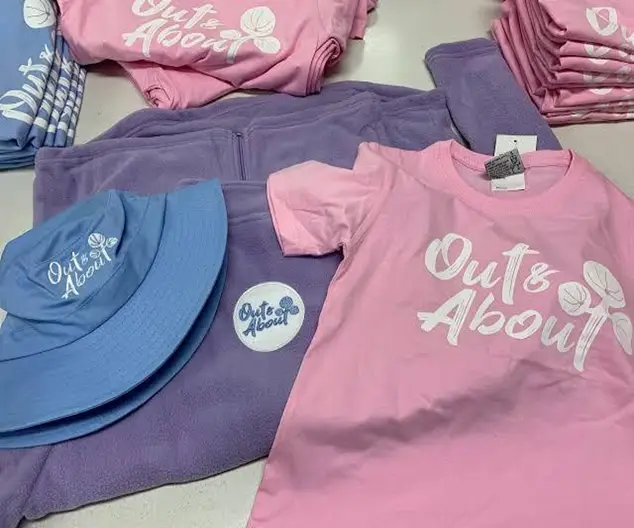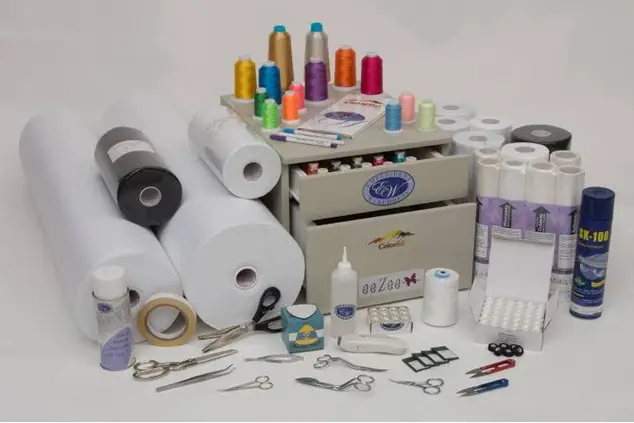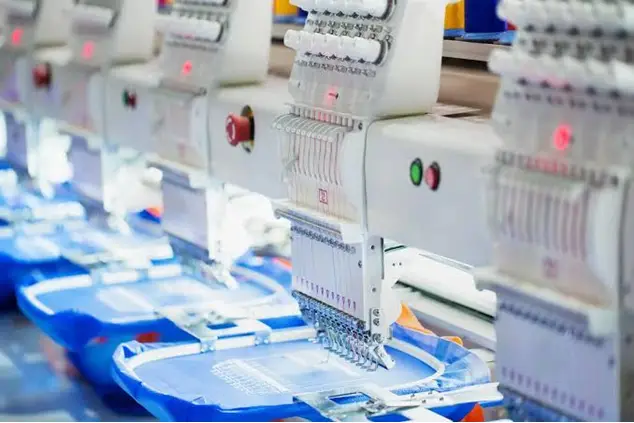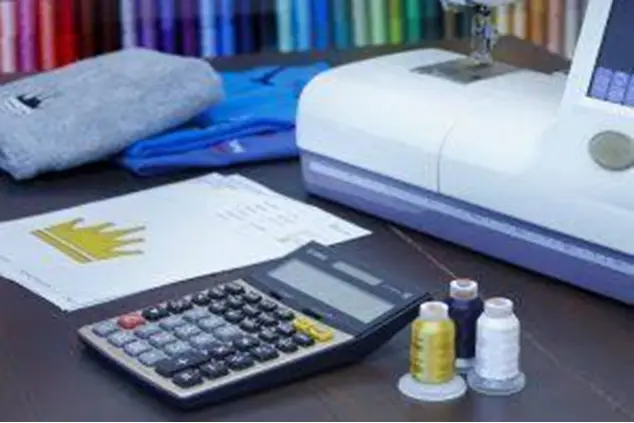How to start an embroidery business?

We observed many people asking how they could create their own embroidery business at home that fits their budget. But they are confused about what their first step should be. In this beginner guide, we will cover a multistep process, starting from selecting the niche to setting up your business. We will also explore marketing tips to get your first customers. Everyone can follow these steps regardless of business category. So, let's start.
If you want to get knowledge about how to set up a Shop and start a Home Embroidery Business, then you can visit: Start Home Embroidery Business
Table of Contents
Steps to start an embroidery business
When we decide to create our new brand, many things come to mind. Here, we will try to sum up successful business tips step by step.
1- Learn and practice
Before you take on any high-paying job, just make sure you get down to the science and the art of embroidery. First, consider what you can do with embroidery and begin creating stuff for yourself, your family, and your friends. Look around your house and start embroidering clothes, old hats, or decor objects. In this way, you will start experimenting with different types of fabric, supplies, and software. The main objective when you're practicing is to build confidence. It is going to be your most important skill in embroidery, especially when you start taking on complicated projects. Once this profession gets enjoyable, everything begins to fall into place, and that is the foundation of your entire business. For more about fabric, you can visit: Top 10 Best Fabric for Embroidery
2- Choose your niche

When starting your home embroidery business choose your niche wisely. The word niche is a specialized segment of the market for a particular product or service. To understand your customers, you have to find a focused niche. Sticking to one niche helps provide excellent service and you'll build trust with customers. When you serve a specific person, it's hard for any type of competition to come in and not anyone comes into any niche. So if you study that niche, and customer needs, you should never have any problem with any type of competition. You can choose your niche by analyzing your hobbies and time work-frame. Some examples of niches include high school sports, fraternities clubs, custom apparel, bridal market pageants, etc. If you want to get knowledge about profitable niches. Then you can visit: Profitable Embroidery Niches
Step 3: Establish your brand
After you have finalized your niche, it's time to go for a unique brand identity. You want to start by looking at the different brands in the market related to your niche. You can also create your online presence by making your website of this particular brand. Choosing the right brand matters because it determines how your relationship is going to be established. It also makes sure that your business grows and scales. Some points help determine the best brand for you:
- What are these different brands related to your niche offer?
- Where do they differ?
- Do they offer training and support?
- What kind of hours do they have their support line for?
- How do they charge their items?
- Are there any charges associated with any warranty or support needs?
Considering these factors, you can create your unique brands and better services.
If you want to get knowledge about increasing sales in the Embroidery Business, then you can visit: Increase Sales in Embroidery Business
Step 4: Do some business documentation
This is the time when you need some business documentation ready that includes tax, I'd, or creating a business bank account. You must learn about federal or state tax, country tax, or tax strategy in your city as well. Keep all these things in your mind when your business is at a small level. Because if you start receiving more orders, you won't have time to start from scratch. If you have a resale license, you may easily set up accounts with all of the leading vendors.
If you want to get knowledge about Grow Your Custom Apparel Business, then you can visit: Custom Apparel Business
Step 5- Get your brand registered
It is important to register your brand such as an LLC or any type to save a lot on taxes. It is because when you open vendor accounts with many suppliers, such as blank apparel, you can obtain favorable pricing. It saves money on tax exemptions because you don't have to pay sales tax if you buy it wholesale. You can resale these blank after embroidering and can get a discount of your choice. So, we recommend consulting with a legal or tax adviser to determine a business entity and structure suited to your needs. When your business gets legal registration, you are ready to take more orders and customer contracts. if you want to purchase embroidery products. Then you can visit: TOP 10 Embroidery Blanks Suppliers
Step 6: Purchasing
Supplies
After you have your paperwork done, you are ready to go for embroidery. Now it's time for investment. You need quality supplies (thread, needle, software, embroidery machine, etc) to run the embroidery. You would also need the blank garments to embroider. Now that you have a wholesale account set up for different suppliers, it might also be helpful to get some embroidery machine accessories. It can make the embroidery process more efficient. For more about threads, you can visit: Machine Embroidery Thread
Browse the best embroidery accessories that boost your embroidery business here.
Embroidery machine
Once you've decided what brand you're going to go to, it is important to decide what machine within that brand spectrum is going to best suit your needs. It might get a little bit overwhelming at times deciding which one you should go with.
1- If you are embroidering as a hobbyist, go with a smaller machine to start. You can upgrade it when you switch to business.
2- Another factor is what you need in your machinery based on what material you wish to embroider, either caps, hats, jackets, bags, or large garments for decor.
3- The choice of the machine is also linked with what type of business you own, are you embroidering for yourself or commercial purposes? So you can choose from simple embroidery to fully commercial machines. Such machines are usually multi-need, where needle number ranges from 10 to 15 per head. And home-based embroidery machines usually have 1 to 6 needles.
4- Ask yourself questions about your financial position and what you can afford.
5- Decide which brand to go with. Check out, does this brand offer training and support such as online training or videos? You can join a Facebook group, ask questions to a community, and learn from others. Also having support from the manufacturer helps when you need it.
Step 7- Price your product and service
This is the crucial and often called money-making step. The profit and loss are linked with how you price your service accordingly. And the tip is, don't undervalue your services. Customers think we only have to push the start button and it sews everything automatically. But we know there are a lot of steps to go through from starting embroidery to sending the finished products to customers. Make sure to calculate your profit margins to make the business able to survive the next project. And you can do so by calculating profit margins.
In our recent blog, we also discuss how you can charge your embroidery.
Step 8- Offer excellent customer service
It is extremely vital and at the same time, it is also difficult. When it comes to embroidery or any other business, it is critical to maintain positive customer relationships. When customers see that passion and knowledge about what you are selling, you begin to establish trust. And that confidence brings more orders and profit to your niche.
Here is a complete guide on 3 incredible ways to start a business with a heat press
Conclusion
We hope this 8-step guide gives you inspiration and confidence to create your own embroidery business. Stick to these guidelines and change your dream of running a profitable embroidery business to reality. In the end, must evaluate the growth of your business to upgrade it at a large scale. Don't forget to share about your embroidered journey with us!
FAQs
The first step to starting a business is to search out your area of interest. This is called niche where you choose what products and services you can provide to people. Search about the market trend, and what you can produce. You can choose apparel, home decor, corporate or personalized items, etc.
First thing, your unique brand identity that attracts customers. The second thing when you offer excellent customer support, this is the key to getting more clients.
Other than just knowing about embroidery, you must learn handling of embroidery supplies, thread, needles, and software. Take a scrap test to check how the software responds to your command. Some other things to learn include tension, push-pull compensation, density, stitch count, etc. After that, learn some skills of pricing and marketing to get good profit.
Yes, you can turn the habit of embroidering items into a money-making process. Develop a strong business plan, search for niche and brand identity, do some legal documentation, get quality supplies and that’s it. Among all, don’t overlook pricing. Keep all the expenses and profits in your mind and price your services and items wisely.




